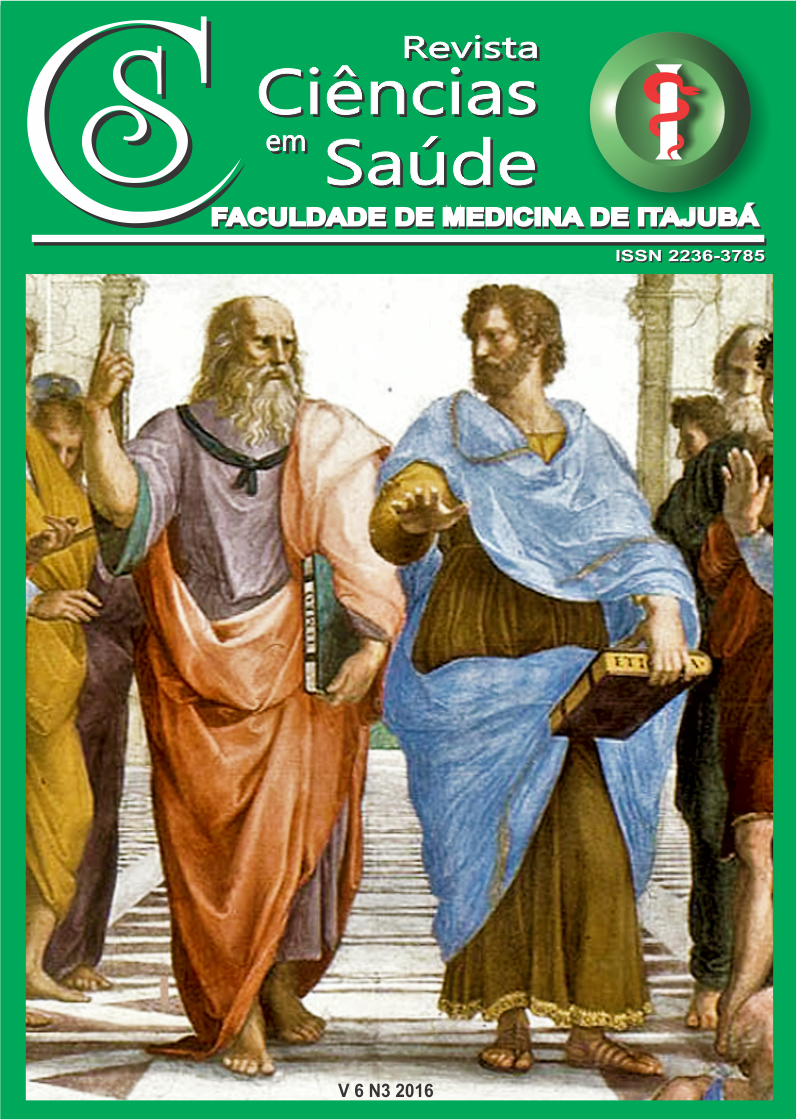Tumor Estromal Gastrointestinal na Transição Duodeno-Jejunal em Idoso - Relato de Caso / Gastrointestinal Stromal Tumor in Transition Duodenum-Jejunal in Elderly - Case Report
Main Article Content
Abstract
Objetivo: relatar um caso de Tumor Estromal Gastrointestinal (GIST), localizado na parede da transição duodeno-jejunal, em paciente idoso, acima de 80 anos. Relato do Caso: paciente de 84 anos, com histórico de epigastralgia e anemia a esclarecer, realizou ecografia e tomografia computadorizada de abdome total, que evidenciaram uma massa na altura do ângulo de Treitz. Na tentativa de se biopsiar a massa, foi realizada uma endoscopia digestiva alta, mas por risco de sangramento iminente da paciente, o exame foi interrompido e posteriormente, a paciente foi submetida à pancreatoduodenectomia com linfoadenectomia para a ressecção do tumor e análise anatomopatológica do mesmo. Discussão: o tratamento preconizado desta neoplasia é geralmente cirúrgico. A massa apresentava 8,0 cm em seu maior eixo, com áreas focais necróticas/hemorrágicas e índice mitótico de 02/50 HPF. Essas características foram determinantes para a classificação do tumor, com risco intermediário para agressividade biológica ou malignidade. Como a massa foi completamente ressecável, não houve a necessidade da terapia medicamentosa específica para esta patologia, o mesilato de imatinibe. Conclusão: por se tratar de um tumor em idoso acima de 80 anos, com localização rara e pela consequente escassez de informações disponíveis, essa afecção se torna subdiagnosticada no Brasil. Portanto, este caso é relevante na medida em que, visa colaborar para o conhecimento mais detalhado da doença, direcionamento do tratamento e prognóstico da mesma.
Palavras-Chave: Tumores do Estroma Gastrointestinal, Intestino Delgado, Idosos de 80 anos ou mais
ABSTRACT
Objective: to report a case of Gastrointestinal Stromal Tumor (GIST) located on the wall of duodenal-jejunal transition in elderly patient, above 80 years of age. Case Report: a patient, 84 years old, with epigastric pain history and anemia to be enlightened, was submitted to an ultrasound and CT scan of the abdomen which showed a mass in the height of the angle of Treitz. In an attempt to biopsy the mass, upper gastrointestinal endoscopy was performed, but because of imminent risk of patient’s bleeding, the exam was stopped. The patient was then submitted to a pancreatic duodectomy with limphoadenectomy for resection of the tumor and histopathological analysis of the same. Discussion: the recommended treatment of this neoplasia is usually surgical. The mass showed 8.0 cm in its greatest shaft with necrotic/ hemorrhagic focal areas and mitotic index of 02/50 HPF. These features were decisive for the classification of the tumor in a intermediate risk to biological aggression or malignancy. As the mass was completely resectable, there was no need for drug therapy for this pathology, imatinib mesylate. Conclusion: because it is a tumor in elderly over 80 years, with rare location and the consequent lack of available information, this disease becomes under-diagnosed in Brazil. Therefore, this case is relevant for in aims to collaborate for more detailed knowledge of the disease, targeting the treatment and prognosis.
Keywords: Gastrointestinal Stromal Tumors, Small Intestine, Elderly 80 and over
Article Details
Authors maintain copyright and grant the HSJ the right to first publication. From 2024, the publications wiil be licensed under Attribution 4.0 International 
 , allowing their sharing, recognizing the authorship and initial publication in this journal.
, allowing their sharing, recognizing the authorship and initial publication in this journal.
Authors are authorized to assume additional contracts separately for the non-exclusive distribution of the version of the work published in this journal (e.g., publishing in an institutional repository or as a book chapter), with acknowledgment of authorship and initial publication in this journal.
Authors are encouraged to publish and distribute their work online (e.g., in institutional repositories or on their personal page) at any point after the editorial process.
Also, the AUTHOR is informed and consents that the HSJ can incorporate his article into existing or future scientific databases and indexers, under the conditions defined by the latter at all times, which will involve, at least, the possibility that the holders of these databases can perform the following actions on the article.
